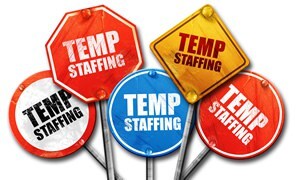There’s a fascinating trend emerging in the business world. Small companies, the backbone of our economy, seem to be using fewer temporary workers. Now, at first glance, this might ring alarm bells. Fewer temp workers could indicate a lack of growth or even a potential downturn. However, diving deeper into the details presents a far more nuanced picture. Let’s break it down.
The Dynamics of Small Business Operations
1. Business Line of Credit
A primary tool in the arsenal of many small businesses, the business line of credit, gives them the flexibility to manage fluctuating costs. Whether it’s expanding operations, covering for broken equipment, or managing cash flows during lean periods, this credit line is a lifeline, especially for those with bad credit.
2. Invoicing
Efficient invoicing is crucial for maintaining cash flow. When customers delay or default on payments, it can throw a wrench in the business’s operations, sometimes leading to an increased reliance on temporary workers to cut costs.
3. Small Business Loans
The ease of accessing small business loans, be it unsecured or short-term business loans, can influence hiring decisions. When businesses secure these loans easily, they’re more likely to invest in permanent hires.
The Role of Factoring
Factoring has emerged as a popular alternative financing method for businesses. By selling their invoices for immediate cash, businesses can maintain consistent cash flows, reducing the need for temp workers. A stable cash flow often means a more stable workforce.
Big Tech’s Unintended Impact
Interestingly, the rise of big tech may play a role in this trend. Advanced tools and software, previously only accessible to large corporations, are now within reach of smaller companies. These tools can streamline operations, reducing the need for additional temporary hands. As small companies leverage technology better, their reliance on temp workers reduces.
The Real Implications
While fewer temp workers might traditionally signal economic issues, the current trend doesn’t necessarily hint at a downturn. Instead, it may be indicative of a shift in business strategy. With alternative financing options like factoring, easy access to a business line of credit, and technological advancements, small companies can now operate more efficiently, often with fewer hands on deck.
Conclusion
The dynamics of the modern business world are intricate. On the surface, fewer temp workers at small companies might seem concerning. But delve a bit deeper, and it becomes evident that this shift is not a sign of impending doom. Rather, it’s a testament to the adaptability and resilience of small businesses as they navigate an ever-evolving economic landscape.

